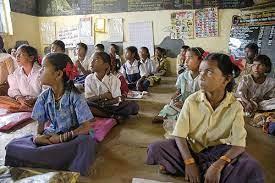Our ancient education system evolved over time and focused on the holistic development of the individual by caring for both the inner and outer self, beginning with Rigveda.
The system emphasized the moral, physical, spiritual, and intellectual dimensions of life. It emphasized values such as humility, honesty, discipline, self-reliance, and respect for all living things. Students were taught to value the interdependence of humans and nature. Teaching and learning adhered to the tenets of the Vedas and Upanishads, fulfilling duties to oneself, one's family, and society, thus encompassing all aspects of life. The educational system emphasized both learning and physical development.
The ancient Indian education system was advanced because it was based on the principles of learning through experience- In ancient India, children began their formal education at a very young age—often as early as 5 years old. They learned through observation and experience. They were often required to participate in fun activities with their teachers and peers, such as playing games or sports.
The idea behind this type of education is that it teaches children how to learn by doing. In addition, it helps them develop social skills, which will make them more successful later in life.
It was based on a philosophy of 'learning by doing.' In other words, students were taught by having them complete real-world tasks, rather than just reading textbooks or listening to lectures.
This meant that students were able to work with their hands and learn about things like math, science, and language in addition to social skills. It also meant that they would be able to apply what they learned in the classroom to everyday life—this is how you get people who are skilled in their fields!
The result was an education system where students were expected to be self-sufficient and independent in all aspects of life, which really helped them develop into well-rounded individuals who could understand the world around them on many levels.
Ancient Indian Education System had a strong focus on learning through repetition and memorization- This approach to learning allowed students to master the basics of a subject before moving onto more complex concepts, which made their brains work harder and helped them retain knowledge better.
The ancient Indian education system was very advanced because it allowed students to learn from their peers, which made the process of learning more effective. The teachers were also well-respected and allowed their students to have a say in what they would learn. This is one of the reasons that we still use this system today in countries like China, Japan and India.
The ancient Indian education system also allowed for students to be exposed to many different types of knowledge at once. For example, if a student wanted to learn about geometry, he could work on it with his classmates who were studying geometry as well as with other students who were studying something else entirely. This approach allowed for a lot of cross-pollination between topics and helped make sure that no one person had all the answers.
